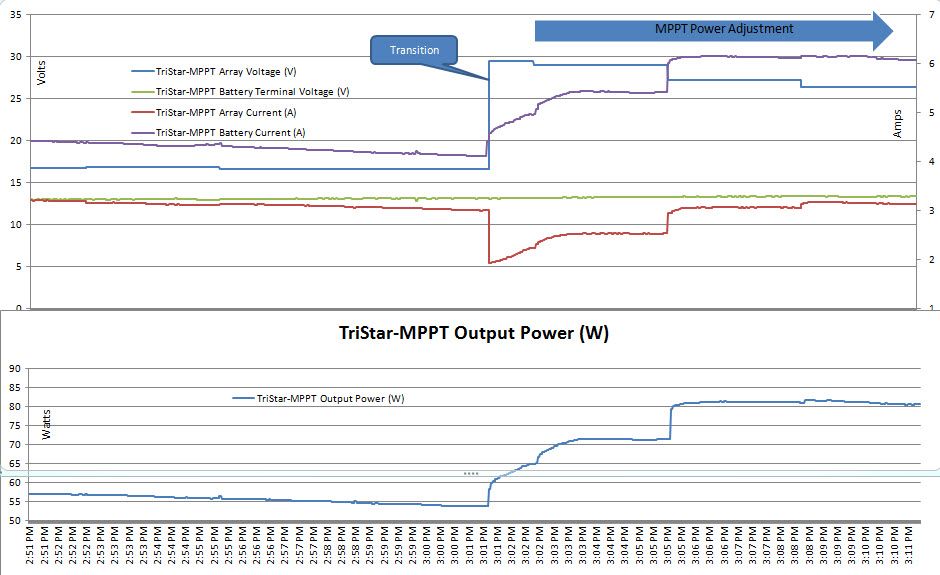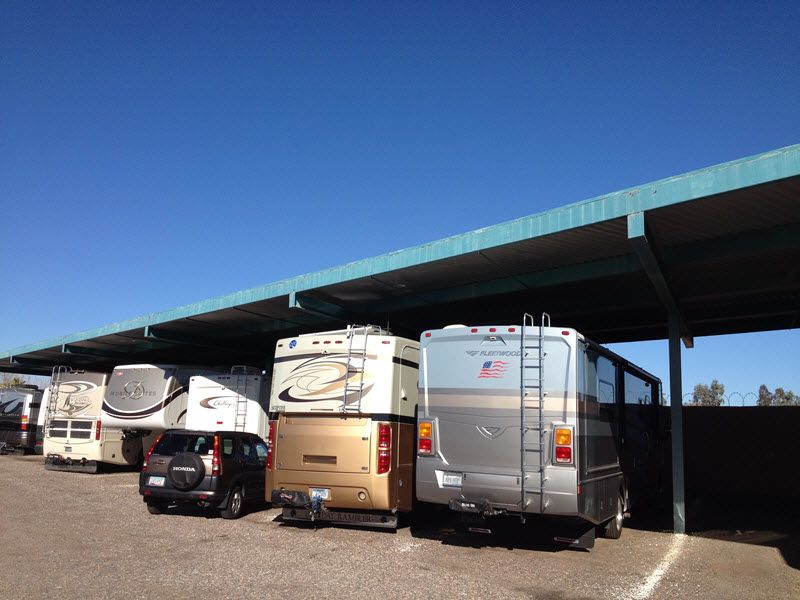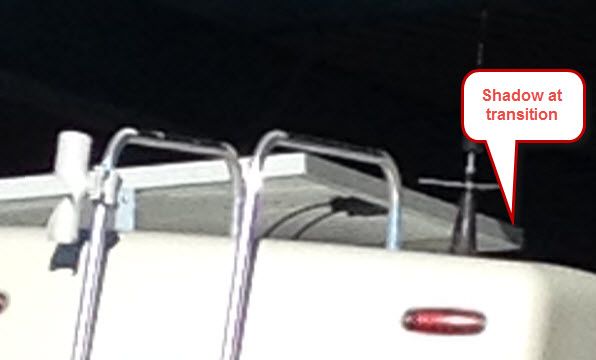CA_Traveler
Jan 17, 2015Explorer III
Solar Panel Shadows and Bypass Diodes
The following data was collected from my 3x250W flat mounted solar panels on 1/16/15 in my storage area in the Phoenix area. The graph shows the significant transition as the sun just covers the 3rd rear most panel while the front 2 panels are in full shade. The Vmp is 92V for the 3 panels in series.
Prior to the transition the sun is covering 2/3rds of rear panel which is producing about 17V and the remaining section is in bypass mode as are the other 2 panels. Then at the transition the 3rd panel is producing its full power while the other 2 panels remain in bypass mode.
This shows an advantage of series panels with bypass diodes and an MPPT controller. For a compatible situation with parallel panels and PWM there would be no power for the batteries prior to the transition.
After the transition the graph shows the MPPT60 controller adjusting for Vmp to obtain maximum power to the batteries. Ie Array voltage is being reduced and array current is increased.
Solar Controller Graphs - Updated and date of test corrected

Storage area overview

Sun transition on the 3rd panel

Prior to the transition the sun is covering 2/3rds of rear panel which is producing about 17V and the remaining section is in bypass mode as are the other 2 panels. Then at the transition the 3rd panel is producing its full power while the other 2 panels remain in bypass mode.
This shows an advantage of series panels with bypass diodes and an MPPT controller. For a compatible situation with parallel panels and PWM there would be no power for the batteries prior to the transition.
After the transition the graph shows the MPPT60 controller adjusting for Vmp to obtain maximum power to the batteries. Ie Array voltage is being reduced and array current is increased.
Solar Controller Graphs - Updated and date of test corrected

Storage area overview

Sun transition on the 3rd panel
